
 |
Circumventricular organs |
The circumventricular organs (CVO's) are midline structures bordering the 3rd and 4th ventricles and are unique areas of the brain that are outside the blood-brain barrier (BBB). These barrier-deficient areas are recognized as important sites for communicating with the CSF and between the brain and peripheral organs via blood-borne products. CVO's include the pineal gland, median eminence, subfornical organ, area postrema, subcommissural organ, and organum vasculosum of the lamina terminalis. The intermediate and neural lobes of the pituitary are sometimes included.
Pineal Organ | ||
| The pineal is a diencephalic structure of the epithalamus. It's principal cell type is the pinealocyte (Figure 1). At the ultrastructural level (Figure 2), other cellular components of the gland are more easily visualized. The gland is heavily innervated by tyrosine-hydroxylase-positive fibers (Figure 3) from the superior cervical ganglia. The other principal cell type is the glia, which are best illustrated by their expression of vimentin (Figure 4). The metabolism of the gland exhibits high-amplitude circadian rhythms in the synthesis and secretion of melatonin with peak production during the dark period (Figure 5) The hallmark of pineal gland function is its role in mediating circadian rhythms of the animal through the production of the hormone melatonin from the amino acid tryptophan (Figure 6).. | ||
| Figure 1 | Figure 2 | Figure 3 |
|---|---|---|
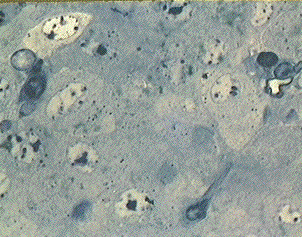 |
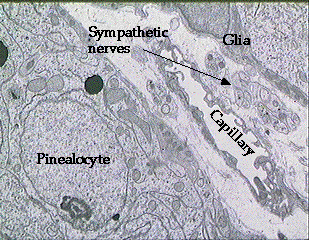 |
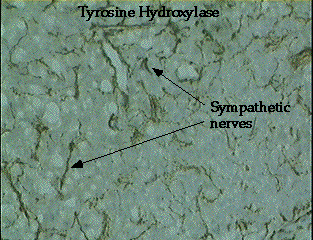 |
| Figure 4 | Figure 5 | Figure 6 |
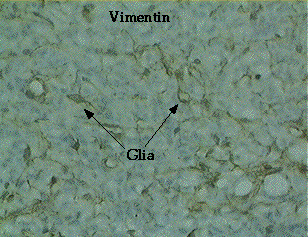 |
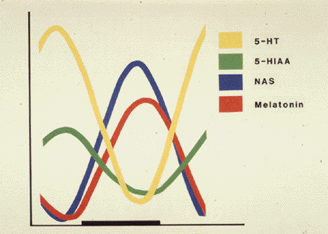 |
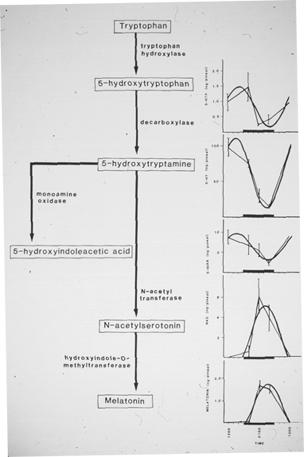 |
Median Eminence | |
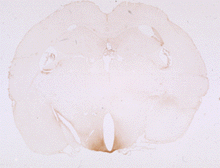 |
The median eminence of the hypothalamus arises behind the optic chiasma, is continuous with the pituitary stalk, and communicates with the CSF. The ME can be demonstrated by immunocytochemical staining for IgG (Figure), which penetrates the BBB. |
Subfornical Organ | |
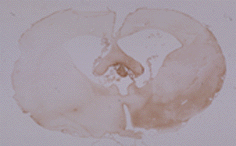 |
The demonstrated by immunocytochemical staining for IgG (Figure), is positioned under the fornix and is one of the 'sensory CVO's' responsible for maintaining blody fluid balances. |
Area Postrema | |
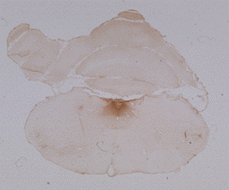 |
This CVO is part the brainstem bordering the fourth ventricle and can also be demonstrated by immunocytochemical staining for IgG (Figure). The AP is another 'sensory CVO' involved in body fluid homeostasis. It is also thought to play a role in emetic physiology (vomiting). |
Subcommissural Organ | |
| The SCO contacts the third ventricle covering the posterior commissure. It comprises a complex of neurosecretory ependymal cells known to secrete various glycoproteins into the CSF. The functional significance of these glycoproteins has not yet been determined. | |


| John A. McNulty | Last Updated: Dec 2, 1996 Created: Nov 11, 1993 |